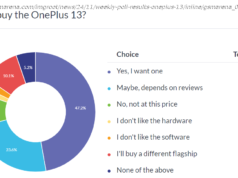Trump’s election drew attention to the Midwest, which felt economically beaten-down as growing tech industry flocked to coasts, USA Today reports.
Shaken by the outcome of the presidential election, Brian McClendon left his job at Uber and returned to the Midwest after three decades in Silicon Valley.
His mission: to bring Silicon Valley-style job creation to Kansas, a state technology investors have long flown over, not into.
The 53-year-old mapping executive, who made a big name for himself with Google Earth, is investing in and advising start-ups. He’s got a part-time gig as a research professor at his alma mater, the University of Kansas. And he’s exploring a run for public office.
More from USA Today: President Trump hurls unbelievable new insults at ‘Morning Joe’ hosts This cop wanted his ex-girlfriend to be arrested. Then drugs appeared in her car. Yes, the plague exists, and it’s not the only old-time disease still lurking
« The future of job growth is in tech, » McClendon says.
The election of Donald Trump laid bare the growing disillusionment of everyday Americans in the nation’s heartland who have watched the gains of the economic recovery pass them by while the tech industry, clustered in coastal hubs like San Francisco and New York, grew wealthy off technology that has radically transformed, even obliterated, jobs and industries.
That wake-up call at the polls has reenergized a movement among Midwesterners to get back to their roots and seed aging rural and manufacturing centers in the Midwest bypassed by the tech boom.
J. D. Vance, the 32-year-old venture capitalist whose best-selling memoir Hillbilly Elegy chronicled the economic malaise in the Midwest, in February moved home to Ohio.
Vance, who attended Ohio State University, says he’s been struck by the transformation taking place in the Midwest — and the opportunity it presents. On one end of the main drag of High Street in Columbus are college bars. On the other end is a vibrant area dubbed the Short North, where venture capital firms and start-ups have set up shop.
Tech start-up clusters like this one dot the Midwest. From Pittsburgh’s Shadyside near Carnegie Mellon University to Cincinnati’s Over-the-Rhine and Old Market in Omaha, Neb., older urban neighborhoods are being revived and turned into mini tech meccas. Near Target Field in Minneapolis, where the Minnesota Twins play, abandoned brick warehouses have been retrofitted for start-ups.
« You have this remarkable potential energy in some of these cities, but it’s not being taken advantage of with proper investment and proper venture capital interest, » Vance said.
For years people have tried and failed to turn technology into the next cash crop. Even Steve Case, the former AOL CEO, concedes that four years of urging investors to spread the wealth to overlooked areas of the country through his Rise of the Rest initiative, has yielded only modest results. According to the National Venture Capital Association, 75% of venture money — the capital that jumpstarted Facebook, Google and scores of others — goes to just three states: California, New York and Massachusetts.
But there are hints of Midwest momentum. This year Columbus-based CoverMyMeds, which makes software to fill prescriptions, was acquired by McKesson for $1.1 billion.
Cleversafe, a Chicago software maker, was snapped up by IBM for $1.3 billion in 2015. A year earlier, Fieldglass of Chicago was bought by SAP for $1 billion. And the acquisition of marketing software company ExactTarget by Salesforce for $2.5 billion in 2013, put Indianapolis on the map.
The initial public offerings of Groupon and Grubhub helped establish Chicago as the Midwest’s center for tech activity. It’s now home to its own fleet of unicorns, start-ups valued by private investors at $1 billion or more.
« There will be more market-defining, multibillion-dollar companies coming out of (the Midwest) in the next 10 years (than) ever before, » predicts Nick Solaro, who in 2014 left Google to join Drive Capital, a venture capital firm of Silicon Valley ex-pats in Columbus. He says he sees the kind of promise in the Midwest that early tech pioneers saw among the fruit orchards that once covered Silicon Valley.
The Midwest has its own brand of tech. Fewer entrepreneurs are focused on modern convenience apps for young urban dwellers. Midwesterners say they take on hard problems for the region’s established industries, from insurance to retail to manufacturing to health care, and find innovative solutions. And that work is drawing top talent from those industries and from Silicon Valley.
According to analysis conducted for USA TODAY by online real estate firm Redfin, that trend has picked up since 2014. More than a dozen Midwestern metro areas — led by Minneapolis, Detroit, Omaha, Cleveland and Columbus — welcomed more Bay Area transplants than vice versa in the first five months of this year, says Taylor Marr, data scientist and economist for Redfin.
« Chicago is a very industrial town with strong roots in industries like health care, like manufacturing, and it has so much potential for tech-enabled solutions to transform industries that we interact with every day, » says Shradha Agarwal, who co-founded Outcome Health with Rishi Shah.
In May, Outcome Health raised more than $500 million at a valuation of $5.5 billion from investors including Goldman Sachs Investment Partners and Google parent Alphabet’s growth equity fund, the kind of deal that is far more common in Silicon Valley.
Rather than wait for Silicon Valley investors to discover Chicago up-and-comers, Shah and Agarwal say they now back promising start-ups with their own investment firm, Jumpstart Ventures.
« Capital is magnetic. It goes to places where it has been deployed successfully, » Vance says. « When these businesses are successful and they get good returns, I think then investors and entrepreneurs start to wake up and think of these areas a little bit differently. »
The Midwest boasts first-class research institutions and a legacy for birthing innovation. More than one-fourth of the Fortune 500 companies, 152, are based in the Midwest. The region would have ranked as the fifth-largest economy in the world in 2014, according to an analysis by Drive Capital.
Yet for years, efforts to transform aging farm and factory towns into far-flung Silicon Valleys have invariably hit a rut. The Midwest reaps 2% of venture capital, according to market researcher PitchBook. And talk of a Silicon Plains or Silicon Prairie have yielded little in the way of economic activity or job growth.
The economic history of the Midwest is, in part, to blame. For generations the region was geared to heavy industry and agriculture, says Richard Longworth, senior fellow at the Chicago Council on Global Affairs and author of Caught in the Middle: America’s Heartland in the Age of Globalism.
Geography is another culprit. The Midwest’s centers of academic excellence, say medicine in Ann Arbor, Mich., and engineering at Purdue University in West Lafayette, Ind., can be isolated from the major cities and capital centers.
Midwest culture also slowed the tech roll. « The Midwest doesn’t do change well, » Longworth said. « The industrial era supported us handsomely for a century, and we got sot in our ways. »
Perhaps the biggest challenge: No money — or at least not enough of it. Silicon Valley has for years shortchanged Midwest innovation, says Robert Hatta, a partner with Drive Capital, which has raised two funds to invest in Midwest tech companies. And homegrown investors are far more conservative and wary of the Silicon Valley brand of risk taking.
It may not level the playing field, but a major shift is taking place. You used to have to be physically close to technology in Silicon Valley. That’s no longer the case. You can build and deploy technology anywhere.
The Midwest is benefiting from « the third wave of the Internet, which is less about the software and the apps and more about integrating technology and the Internet in important aspects of our lives and disrupting big sectors of the economy, » says Case.
So Midwest tech start-ups are putting down roots as close to their customers as they can.






